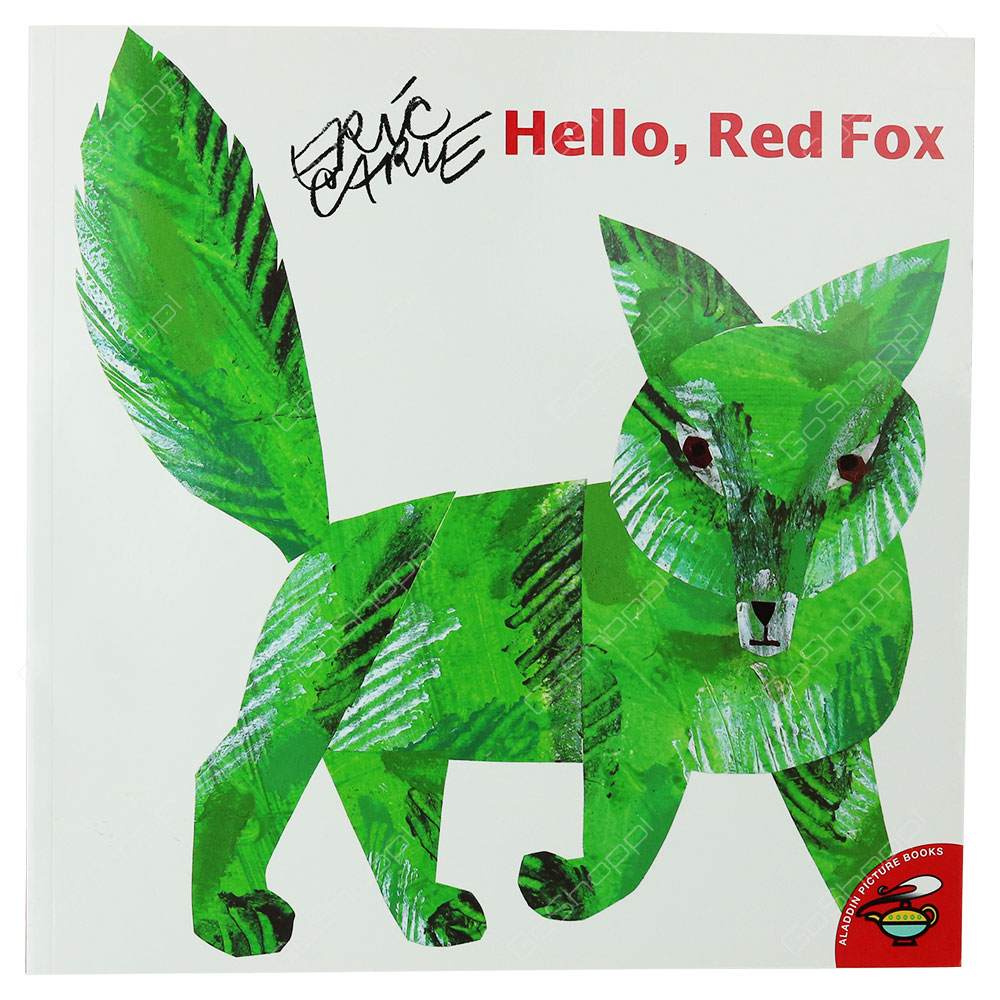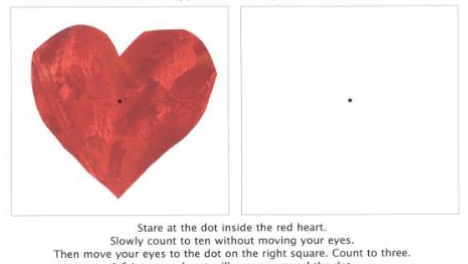We love good children’s books and we’ve read many Eric Carle books before. Of course, “The Very Hungry Caterpillar” and “Brown Bear, Brown Bear…” (which we have a commentary on), “The Very Quiet Cricket” , “The Tiny Seed” and others. But we never read his “Hello, Red Fox” before, until this summer (2019). And it really made us think!
First you have to understand how the book works. “Hello, Red Fox” is not just a book to read or look at. You have to take a closer sustained focus look.
 Let’s start with the cover. The title says: “Hello, RED Fox” but the cover illustration is most certainly of a GREEN fox! This mismatched incongruity leads you right into the plot of the story.
Let’s start with the cover. The title says: “Hello, RED Fox” but the cover illustration is most certainly of a GREEN fox! This mismatched incongruity leads you right into the plot of the story.
And then there’s a page in the book introducing the method, showing you how to go about reading the rest of the book. On the left side of the page is a large red heart. In the center of that heart there’s a small black dot. Eric Carle, the author and illustrator, tells you to focus deeply on the black dot inside of the red heart for 10 seconds. Don’t look away. Be sure to stare directly at the black dot in the red heart for 10 full seconds.
And then immediately afterwards, turn to the right side of the page, an empty white page with a black dot at the center. Stare at that black dot for 3 seconds. What do you see? It may not work as well in small on screen, but should have a similar effect.
(If it doesn’t work you may need to see it larger. If viewing on a phone, just click on the image. We may post a larger image option later).
The science behind this is called “after-image contrast” or “opposing process theory”. It also tells you something about the opposing sides of the color wheel.
But in addition to whatever author/illustrator Eric Carle had in mind, the little black dot and this magical effect got me thinking. Two thoughts actually.
Parable #1: Imagine for a moment that the red heart pictured is a dark negative space. Just for the analogy/message’s sake. By finding its innermost core, by zeroing in on its deepest essence, one can then re-envision, or re-see the same dot drawn with a glimpse or traces of something much brighter.
The Rebbe thought this way. He looked into the heart of the exile, and found sparks of redemption. He saw possibilities for light within the darkness itself, but only by reaching deep into its innermost core. Even in sadness, the Rebbe finds glimpses of joy. This transformative and uplifting perspective, a “positivity bias” is found throughout the Rebbe’s teachings. When explained philosophically, it has a lot to with finding that innermost core, seeking the essence, going deeper and within the shallow surface or superficial layers. That inner dot is the transformative focus.
Parable #2: Sometimes we look at other people and see a blank, empty sheet. We see nothing there. Eric Carle is telling us what Chassidus (see Tanya 32 etc) tells us to do. Look inside your own heart, find the “pintele Yid” that G-dly dot or essence (Pintele is Yiddish for dot) and then see that same dot in someone else, and all of a sudden, out of what you thought was an empty page or person will emerge a glowing radiance!
It is so appropriate that we happened to come across this book during the “Three Weeks” when Jews mourn the destruction of the Jerusalem Temple. (1) Rebbe sees this time of mourning as a time of spiritual opportunity. Rebbe urges us to seek ways to transform the sadness into joy, the exile into redemption. To see it all differently! (2) Love of our fellow is a Mitzvah all year long but there is special emphasis during this period of the Three Weeks. It is said that the Jerusalem Temple was destroyed because of baseless hatred, and will be rebuild when we have unconditional baseless love!
Focus on the dot, the inner soul core, the Pintele Yid, helps us with both! Thanks Eric Carle for this thought-provoking visual book of incredible and magical transformations!

